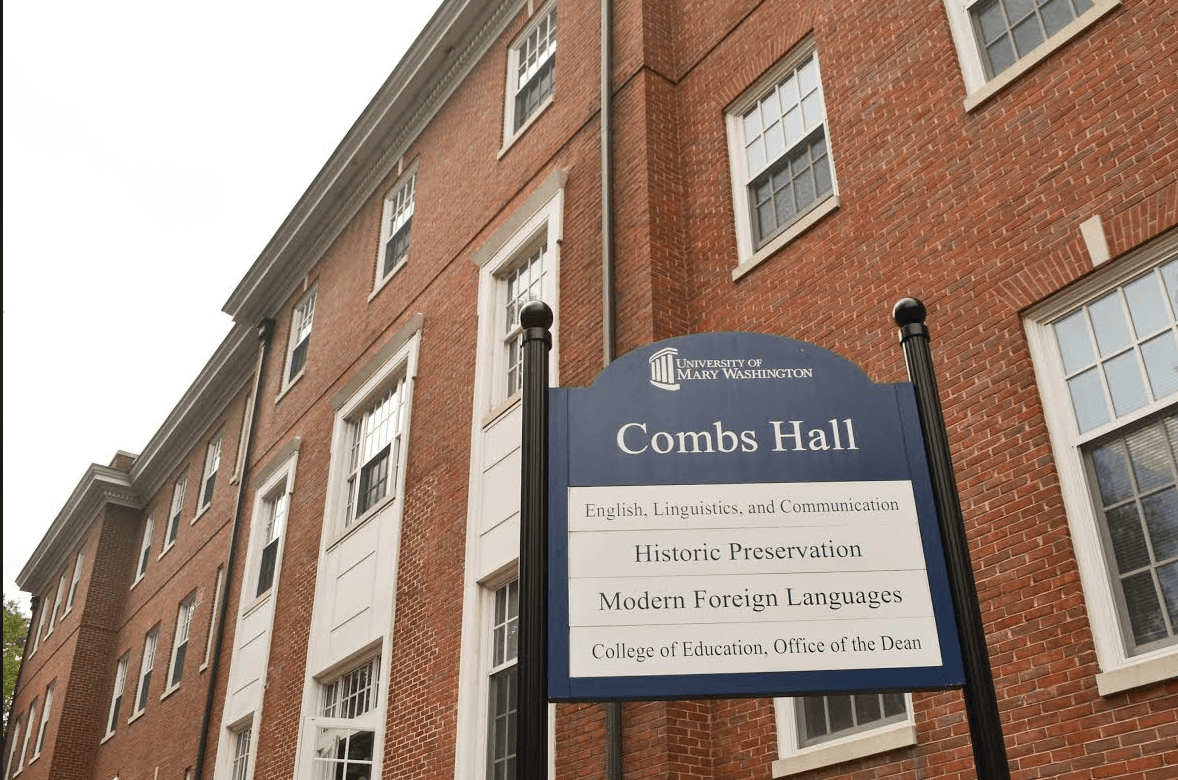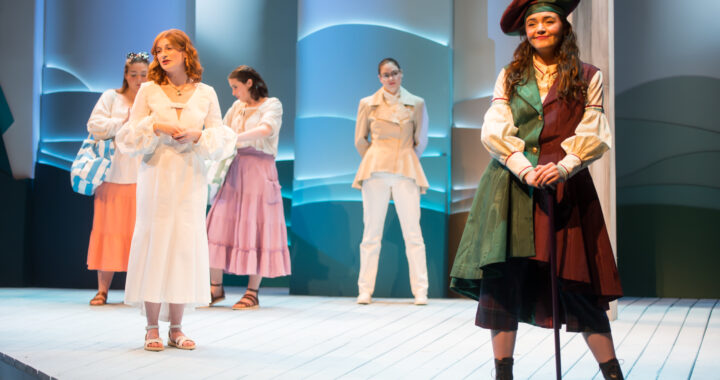Paper clipping-riddled chair in Combs represents more than furniture
5 min read
By HEATHER JACKLING
It was the last day of English 295, 1990 and Dr. Mary Rigsby, professor of English, waited while her students shuffled into class, ready to hand over their final papers. To her surprise, Rigsby noticed that one student had not yet arrived.
Rigsby wondered where the missing student, Mark Kazmier, was on this important day. For, who in their right mind misses a final exam? Well, have you ever noticed the chair covered in scraps of paper in the professor’s wing in Combs Hall? It just so happens that it is covered in the scraps of Kazmier’s final essay.
25 years ago, while Professor Rigsby waited, Kazmier arrived in the classroom dragging a chair covered in bits of paper. “What is that?” Rigsby asked him, and Kazmier replied, “My final paper.”
If you have ever taken a course with Rigsby, than you most likely know of its urban legend. The chair now sits on the third floor of Combs Hall, directly behind the double doors to the hallway that the English and Linguistics professors call home for the semester.
Kazmier did not create the chair for entertainment, or so that it would become urban legend. Kazmier took a risky approach to his final essay in response to the dramatic actions that artists often employ in their work.
Rigsby’s lesson plan in ENG 295 encompasses the story of the famous French artist Marcel Duchamp, and his piece, “Fountain,” which was nothing more than a urinal he had signed and dated. He submitted the structure to the independent exhibit of an art museum in France in 1917.
Unfortunately, Duchamp’s piece was rejected due to its shocking, and reportedly unappealing, nature. The piece could be politely described as “a porcelain bathroom fixture.” Like many notorious works, Duchamp’s submission gained in popularity despite its decidedly impolite nature. Duchamp had already gained some notoriety in addition to being a well-liked artist.
Eventually, the piece was submitted to the gallery, although people were no longer able to use it for its original function. In using this story in her class, Rigsby encourages students to consider what exactly art means, and who gets to make the determination of its definition.
For Kazmier, his chair was meant to respond to Duchamp’s art. He was so enraged by the actions of the artist that he decided to enact a sort of controlled rebellion by turning in his essay as a creation, rather than as a plain old essay.
Rigsby has become the keeper of the story, which encapsulates a tale of intellectual radicalism and rebellion. “He was outraged, and by proxy, outraged with me since I am the messenger,” Rigsby said.
Kazmier was outraged that Duchamp was able to submit a urinal and call it art, especially because Duchamp did not even craft the actual urinal, and was able to take full credit for it. Because of this infuriation, Kazmier decided to turn in a replication of the theorized idea of art.
Rigsby speculates that Kazmier’s intentions were to have her prove what she taught over the course of the semester, particularly in regards to the issue of art classification.
If Kazmier were to turn in his final essay in fragments on an object such as a chair, and thus remove its functional intention, and replace that with the artistic interpretation of an essay, Rigsby would have to give him a passing grade, or otherwise be considered hypocritical.
“I’ve heard that his initial intention was to burn the chair in class, as a means of performance art, since it cannot be repeated, and shouldn’t be replicated. But I think his friends might have talked him out of it,” Rigsby said.
If you look closely at the chair, some of the paper slips are slightly singed along their edges. Kazmier earned an A-, not because of his rebellion, but because he followed Rigsby’s grading rubric for the assignment.
Rigsby accepted the submission and brought it back to her office. Bill Kemp, the chair of the English department at the time, walked by her office and noticed the unusual sight. Kemp asked her where and what is was for. Rigsby explained the circumstances surround the chair, and Mr. Kemp was so excited that he asked if the English department could have the chair.
Unfortunately, Rigsby needed the permission of the student. Kemp authorized her to spend up to $50.00 to purchase the chair from Kazmier.
Suddenly she noticed a sticker on the underside of the seat, which she had missed before in all the excitement. In bold black letters was printed “Property of Mary Washington College” on the bottom of the chair.
Rigsby was shocked, as she was left wondering how exactly she was going to go about asking for the chair that was technically university property. “The chair was rickety, so it could have been something the school was about to throw away,” Rigsby explained. When she reached the classroom she started returning essays accompanied by peppermint patties.
When it became Kazmier’s turn, Rigsby asked him if she could have the chair, and he responded that he would trade it to her in exchange for a peppermint patty. Since then, the chair has become a legend within Rigsby’s ENG 295 course.
“I show it to my students every year,” Rigsby said. Although, now she does not allow students to replicate Mark’s assignment. “Before you start thinking of what furniture you’re going to bring me, you can’t do it. It’ll be a cliché,” Rigsby cautioned. For Rigsby, Kazmier’s risky endeavor paid off, thanks to his innovative style and intelligent execution.
Kazmier achieved exactly what Duchamp achieved with his urinal, answering a question of what counts as art, as well as thoughtful social commentary.
Rigsby is not the only professor in the ELC department to receive a rather shocking or strange assignment submission, which reflects the course’s intentions and serves as a creative response.
Dr. Mara Scanlon, professor of English, said that last semester during her modern poetry course a student performed a creative piece in lieu of a final exam submission.
Ginny Clark, along with the rest of her classmates, performed a rendition of Tai Chi, which Scanlon said was a reflection of the famous poet Hilda Doolittle.
“When Clark stood up and launched into this, I was kind of shocked,” Scanlon said, “she’s very smart, but usually a very quiet person.”
Finals may be a stressful time on campus, but it is also a time that allows student to find creativity and joy during their final exams. For students like Kazmier and Clark, who embody the spirit of their courses in tangible ways, it’s important to represent the true spirit of liberal arts colleges.











